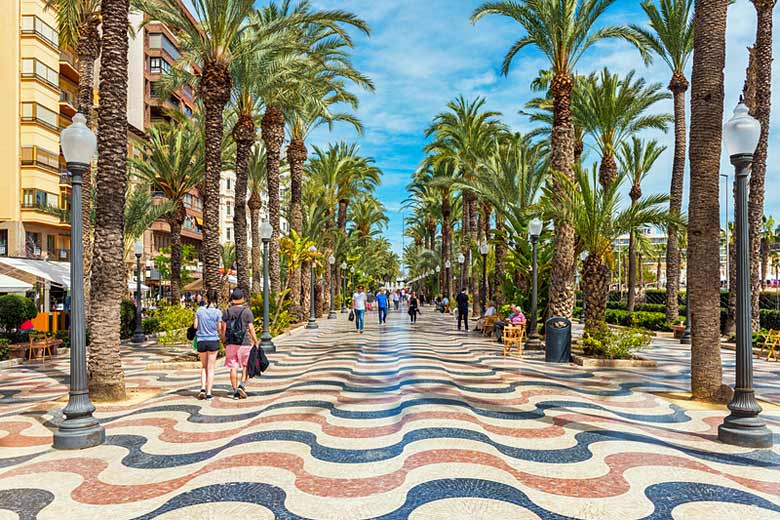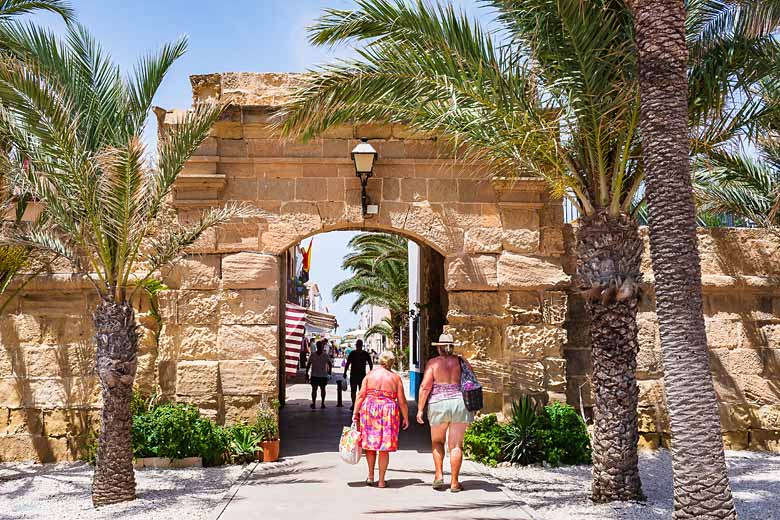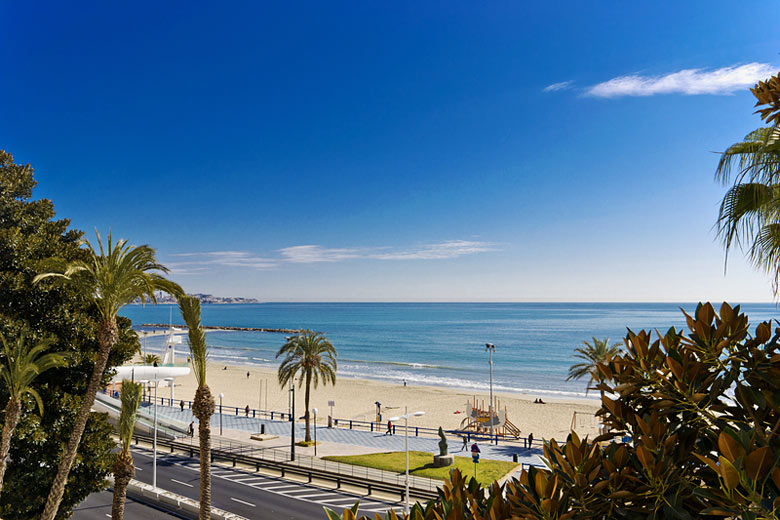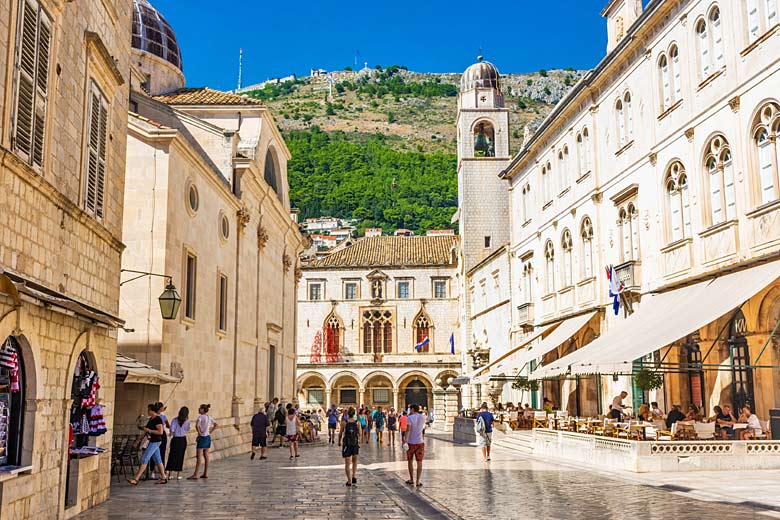Alicante: gateway to the Costa Blanca
It's all too common for tourists and visitors to Alicante* to simply skip the city as they make their way directly from the airport to the sunny shorelines of the Costa Blanca (Benidorm*, we're looking at you!).

But in doing so, they miss out on one of Spain's most interesting and exciting port cities. It makes the perfect weekend city break; alternatively, use it as your gateway to explore the Costa Blanca at the start of your holiday.
Here, Spain* writer Ross Clarke explores what you can get up to in and around the Mediterranean city.
Getting to Alicante: book an escape with Jet2CityBreaks* to Alicante to discover the many sides of this exciting city for yourself.
Get lost in the old town
It's not just photographers who should come prepared for the streets and sights of Barrio de Santa Cruz (Santa Creu in Catalan), as this historic neighbourhood is awash with tapas bars and intimate cocktail joints, as well as some of the city's most imposing visitor attractions.

It is on a hill, but the hike up the pretty streets and alleyways is worth it when you see the colourful tiled houses and view from the top, Mirador de la Santa Cruz. You'll spot Arab influences from the geometric shapes and patterns on tiles to the screened wooden balconies.
That's because this area of town dates back to the time of the Moors, Islamic rulers who also built the Santa Bárbara Castle, the impressive yellow, stone castle that dominates the skyline. If you don't fancy the walk up to the castle, don't fret, there's a lift.
Eat rice
You can't visit Alicante without at least trying a sample of its famous grain. Rice in Alicante sits somewhere between religion and way of life, and every Alicantino will have their favourite recipe, be it snails and rabbit, red prawns or beef trotter.
The important thing to remember is never to call it paella. While that is also a rice dish, it very much belongs to Valencia further up the Spanish coast.

Try Restaurante Racó del Pla for traditional plates or Restaurante Dársena for fish and shellfish dishes on the port side.
Alternatively, head to the local tourist information office for details on the Alicante Ciudad del Arroz guide to the best rice restaurants in town.
Island hop
Just off the coast of Alicante is a small archipelago made up of the islets of La Cantera, La Galera, La Nao and Isla de Tabarca, the only inhabited island in the Region of Valencia.
A trip over to the island makes for an ideal day trip. Head to the marina in Alicante to catch the boat. Out of season, there's one trip per day, but come summer, there are multiple journeys across the 11 nautical miles to the island, costing just over €20 for a round trip. You can also jump on a boat from nearby Santa Pola and Benidorm.
.
Once there, make tracks for the Museo Nueva Tabarca (currently being refurbished) to learn about the island's intriguing history as a refuge to Berber pirates, and how it came to be fortified in the 18th century.
You can see the protected walls as you venture around the island. With heritage under your belt, spend time supine on beaches lapped by clear sea water before trying the local speciality, caldero, a fish, rice and potato dish served in two parts, at one of the many seafood restaurants.
Drink wine
Wine-making in the Alicante region has a long history, especially in sweet dessert-style wines, and over the last 50 years or so, the wine industry here has really homed in on quality and perfecting varieties that flourish in the low-lying region.
You can find local restaurants, bars, vineyards and bodegas where you can do tastings, and learn about how wine gets made through the very handy Ruta del Vino de Alicante website.
Local varieties to keep an eye out for include, Mersegurea for white wines and Monastrell for red wines, and if you spot Fondillón, try it. This semi-sweet wine is unique to the Alicante region and is made using overripe Monastrell grapes.
Head to the beach
With a backdrop of the Santa Bárbara Castle and Alicante city, Postiguet might just be one of the world's great city beaches.
It's popular with both locals and tourists thanks to its gentle incline, café-con-leche-coloured sand, and temperate Mediterranean waters.

When you've had your fill of soaking up the sun, stroll the famous promenade. You'll start on Paseo de Gómiz where the floor tiles look almost 3D, before heading onto Explanada de España with its undulating pink and white tiles and palm trees.
There are often market stalls here selling souvenirs, t-shirts and handmade items. If you want to get out of the city, try Saladares-Urbanova Beach just 5 km south of the city. This nearly two-kilometre strip of sand is often quiet but still has plenty of facilities and easy access.
Take a day trip
Alicante makes a great base to explore the region. One of the easiest and most cost-efficient ways to explore the coast is the tram. Line number one will take you all the way from Alicante to Benidorm in just under an hour and a half.
While the coastal resort has a bit of a reputation, it has spectacular beaches, theme park Terra Mitica, and the wondrous Balcón del Mediterráneo viewing point to its name.
You can change trams in Benidorm to head further up the coast to Dénia, arguably the region's go-to destination for food lovers.
In 2015, the coastal city was named UNESCO Creative City of Gastronomy, and since then, discerning diners have been flocking here looking to snag a table at Chef Quique Dacosta's three-Michelin-star restaurant and explore the innovative tapas bars.
Each year, many of the city's restaurants take part in the Ruta de Tapas, a nearly month-long celebration where you can get a tapa and a drink (wine, beer, vermouth) for €4.
Weather in Alicante
| Jan | Feb | Mar | Apr | May | Jun | Jul | Aug | Sep | Oct | Nov | Dec | |
|---|---|---|---|---|---|---|---|---|---|---|---|---|
| Maximum daytime temperature °F | ||||||||||||
| Hours of sunshine (daily) | ||||||||||||
| Days with some rainfall | ||||||||||||
| Sea temperature °F |
The above guide shows the weather in Alicante. Find out more about the weather across the Costa Brava.
Ready to discover Alicante? Check out the latest deals on breaks with Jet2CityBreaks. Alternatively, head for Costa Blanca with the current offers on beach breaks with Jet2holidays.
More about the Alicante
- Overview
- Best time to visit
- Weather by month
- 5-day weather forecast
- Destinations
- Travel advice
- Deals & discounts
Alicante by month
Jan Feb Mar Apr May Jun Jul Aug Sep Oct Nov Dec
Explore holidays in the sun for less
- Beach holidays
- Family holidays
- City breaks
- Summer holidays
- Winter sun holidays
- Holiday offers
- Top travel brands
- Airlines & flights
- Discount hotels
- Airport parking deals
- TUI
- Jet2holidays
- easyJet holidays
- Love Holidays
- British Airways
Airport parking
- Manchester Airport
- Stansted Airport
- Bristol Airport
- Luton Airport
- Birmingham Airport
- Edinburgh Airport
- Gatwick Airport
- Glasgow Airport
- Newcastle Airport
Airport lounges
- Manchester Airport
- Birmingham Airport
- Bristol Airport
- Edinburgh Airport
- Glasgow Airport
- Heathrow Airport
- Newcastle Airport
- Stansted Airport
- Gatwick Airport
Be inspired
Get your weekly fix of holiday inspiration from some of the world's best travel writers plus save on your next trip with the latest exclusive offers
We promise not to share your details





































